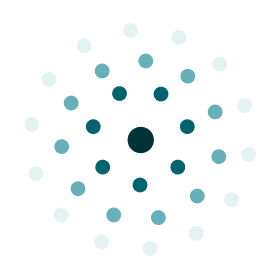Artificial Intelligence has moved from being a promising enhancement to becoming the operational core of modern recruitment. Every hiring team today faces rising requisition volumes, rapidly evolving skill demands, and shrinking timelines. Traditional manual processes—screening resumes, coordinating interviews, grading candidate assessments—can no longer sustain the speed or consistency required in competitive hiring environments.
A recent Gartner survey highlighted that 48% of HR leaders believe skill demands are evolving faster than existing talent processes can support, indicating a widening gap between organizational needs and current capabilities. At the same time, candidate trust in AI-powered hiring remains fragile. Another Gartner report found that 32% of candidates fear AI might unfairly reject their applications, and 25% trust employers less when AI evaluates their information. Only half of job seekers fully trust that job postings are legitimate.
This dual reality—where AI is essential for scale yet cautiously viewed by candidates—puts extraordinary pressure on organizations to choose the right AI recruiting tool. The question is no longer whether to adopt AI, but how to choose AI recruiting tool that is fair, transparent, ethical, deeply integrated, and capable of adapting to modern hiring complexity.
Why AI Recruiting Has Become a Strategic Imperative
The recruitment landscape today is not defined by mere automation. It is defined by responsiveness, consistency, and intelligence. Companies must make faster decisions without sacrificing accuracy. They must reach candidates with empathy while maintaining operational rigor. And they must unify fragmented recruitment systems into a single, coherent hiring engine.
AI recruiting tools are meant to bridge this gap—yet not all tools do. Some focus only on basic automation, some only on chatbots, some only on interviewing, and others claim AI capabilities when they actually rely on rigid templates. Choosing the right tool requires a deeper, more thoughtful evaluation of how AI influences hiring outcomes, candidate experiences, team efficiency, and long-term workforce strategy.
Start With the Core Outcome: Does the Tool Truly Reduce Time-to-Fill?
A meaningful AI recruiting tool must create measurable reductions in time-to-fill across the entire hiring journey—not just at isolated touchpoints. This requires far more than filtering resumes or automating calendar invites. A future-ready platform should deeply understand job requirements, interpret candidate data with contextual intelligence, and autonomously drive progress from one stage to the next.
The right solution should be able to read a job description the way a seasoned recruiter does—extracting key skills, competencies, and behavioral expectations—and translate them into consistent evaluation logic. It should reduce the hours spent manually screening candidates by conducting its own structured assessments, and it should support hiring managers by summarizing interview insights clearly and effectively.
When selecting a platform, organizations must examine whether the tool delivers meaningful reduction across screening, interviewing, shortlisting, assessment, and decision-making. A tool that automates small tasks but fails to compress the overall hiring cycle is not designed for the demands of modern recruitment.
Look Beyond Automation: Evaluate Whether the AI Is Truly Agentic
Many vendors claim their platforms are “AI-powered,” but in reality, they often rely on rules, templates, or keyword matching. These systems lack adaptability and cannot evolve with changing hiring requirements.
A more advanced class of recruiting technologies operates with agentic AI—AI that can independently interpret information, adapt logic, and make context-aware decisions. Agentic AI does not wait for predefined rules; it learns from the hiring environment, identifies patterns in successful selections, and autonomously adjusts screening criteria to align with organizational preferences.
This distinction is fundamental to understanding how to choose AI recruiting tool effectively. Agentic AI reads and interprets text, understands role complexity, routes candidates intelligently, and orchestrates full hiring flows without constant human intervention. By contrast, template-based systems often break when job roles evolve or when hiring teams need flexibility across departments, geographies, or business units.
Organizations seeking long-term scalability should prioritize AI that can behave with autonomy and intelligence—not just follow instructions.
Prioritize Ethical AI, Fairness, and Explainability
With candidates becoming increasingly cautious about automated decision-making, ethical AI has emerged as one of the most critical evaluation factors. A responsible AI recruiting tool must be able to explain how it arrived at a decision. It must avoid biased interpretation of candidate data. And it must operate with built-in safeguards that protect fairness.
A transparent, ethical system does more than publish a fairness statement. It openly demonstrates why a candidate qualified or did not qualify, how certain competencies were measured, and what factors contributed to the final recommendation. When an AI system can articulate the reasoning behind its scoring, it strengthens both internal confidence and candidate trust.
Bias detection should be embedded into the system’s architecture, continuously analyzing patterns that may indicate systemic skew—whether in gender, age, ethnicity, or educational background. True ethical AI automatically adjusts its models to correct these patterns, maintaining equitable evaluation standards across roles and candidate pools.
In a world where mistrust of AI is a growing concern, tools that cannot demonstrate fairness and transparency should not be adopted.
Assess Integration Capabilities: Does the System Strengthen or Fragment Your Stack?
One of the biggest challenges in modern HR technology is fragmentation. Organizations often use an ATS for applications, another tool for assessments, another for scheduling, and yet another for interviews. When these tools do not integrate deeply, recruiters end up juggling systems, transferring data manually, and losing productivity.
A high-quality AI recruiting tool must integrate into your ATS so seamlessly that it feels like an extension of your existing workflow rather than an additional platform to manage. This means match scores should be visible directly inside the ATS, interview summaries should update in real time, and candidate progress should be synchronized without manual oversight.
Integration is not just about APIs or data exchange—it is about eliminating login fatigue and presenting a unified, coherent view of the candidate pipeline. Tools that require recruiters to switch tabs constantly create cognitive load and slow down hiring rather than accelerating it.
When evaluating solutions, it is essential to prioritize platforms that offer native, bidirectional integrations with widely used ATS systems. This ensures that recruiters benefit from the intelligence of AI without sacrificing workflow simplicity.
Evaluate the Candidate Experience: Does AI Enhance Human Connection?
AI recruiting tools must support candidates just as much as recruiters. A well-designed system should communicate with clarity, empathy, and transparency. It should guide candidates through their journey, help them prepare for assessments, and keep them informed about their progress.
Candidates today expect digital experiences that are intuitive and respectful. They respond well to conversational interfaces that mimic human dialogue rather than mechanical, interrogation-style chatbots. They appreciate assessments that feel relevant, personalized, and purposeful rather than overwhelming.
An AI recruiting tool should reinforce trust through transparent communication and mobile-friendly design, ensuring that candidates can participate comfortably regardless of device or location. When AI enhances the human aspect of hiring rather than diminishing it, organizations stand to gain better engagement, stronger employer branding, and higher-quality applications.
Examine Security, Governance, and Compliance Standards
Recruitment involves the handling of significant volumes of personal data—from resumes and identity documents to behavioral assessments and interview recordings. This makes security and governance critical considerations when determining how to choose AI recruiting tool.
A trustworthy system must adhere to industry-leading security certifications such as SOC2 and ISO standards. It must comply with data protection laws, including GDPR and the Digital Personal Data Protection Act, offering robust encryption, access control, and clear data retention policies.
Governance involves providing organizations with visibility into model behavior, audit trails for evaluations, and safeguards against unauthorized access. A responsible AI recruiting tool should make data handling transparent and easily reviewable, enabling compliance teams to monitor usage effectively.
Without strong governance, even the most advanced AI systems pose risks that organizations cannot accept.
Expect More Than Automation: The Tool Should Provide Intelligence and Insight
Automation alleviates workload, but intelligence transforms strategy. A superior AI recruiting tool should offer insights that help organizations understand hiring patterns, competency gaps, pipeline bottlenecks, and team productivity.
This includes generating summaries of candidate strengths and risks, identifying emerging skill demands, analyzing funnel performance, and offering recommendations on where to focus recruitment efforts. These insights empower talent leaders to make informed strategic decisions rather than relying on fragmented or anecdotal information.
Recruiting is no longer just about filling positions; it is about aligning workforce capabilities with business goals. AI tools that provide deeper intelligence elevate the hiring function into a strategic partner within the organization.
Why Senseloaf SIA Sets a New Benchmark for AI Recruiting
Senseloaf’s SIA (Senseloaf Intelligent Automation) represents a new generation of AI recruiting platforms—one built from the ground up as an AI-native talent operating system rather than a standalone tool. SIA operates through a network of specialized agents capable of interpreting job descriptions, screening candidates, conducting AI-driven interviews, summarizing insights, and autonomously moving candidates through hiring stages.
Its operating philosophy is “Human + AI”—a belief that AI should enhance recruiter judgment rather than replace it. SIA presents clear, explainable evaluations that help both recruiters and hiring managers understand the rationale behind each recommendation. Instead of relying on pre-programmed templates, it adapts dynamically to hiring patterns, role requirements, and organizational preferences.
SIA is also built with strong ethical foundations. The platform offers transparent scoring, inherent bias detection, and detailed explanations for every evaluation. This transparency helps rebuild candidate trust at a time when concerns around AI fairness are rising.
Finally, SIA integrates deeply with major ATS platforms, providing match scores, interview insights, and candidate movement directly inside systems like BambooHR, Lever, UKG, Greenhouse, and others. By eliminating the need to switch between tools, SIA unifies the recruitment experience into a single, coherent workflow.







